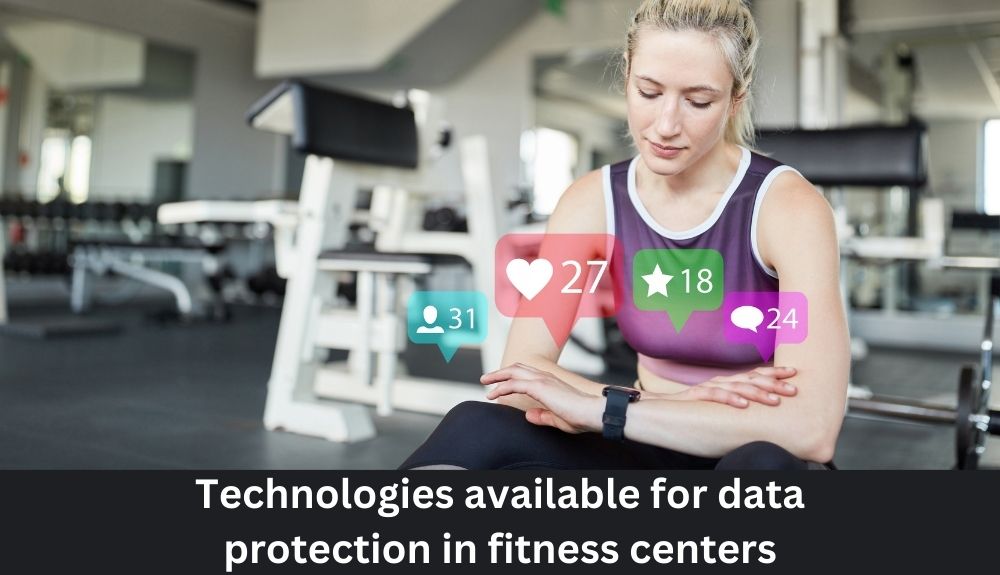
By admin February 15, 2024
Introduction to the importance of data protection in fitness centers
Welcome to the world of fitness centers, where sweat meets technology and goals are transformed into achievements. As members embark on their wellness journey, one aspect that often takes a backseat is the security of their payment information. In our increasingly digital age, protecting member payments has become more important than ever before. With numerous payment methods at play and potential risks lurking in the shadows, fitness centers must implement best practices and cutting-edge technologies to ensure data protection. So strap on your workout gear and join us as we dive into the world of securing member payments in fitness centers!
Common payment methods used in fitness centers
When it comes to paying for their fitness memberships or classes, members at fitness centers have a range of payment methods available to them. These options are designed to offer convenience and flexibility, making it easier for individuals to manage their payments.
One common payment method used in fitness centers is credit or debit card payments. Members can simply swipe or insert their cards into the card reader, enter their PIN if necessary, and complete the transaction. This method is widely accepted and allows for quick processing of payments.
Another popular option is electronic funds transfer (EFT) or direct debit. With this method, members authorize the fitness center to automatically deduct monthly dues from their bank accounts on a specified date. It eliminates the need for manual transactions each month and ensures that payments are made on time.
Some fitness centers also accept cash payments, although this method is becoming less common due to its limitations in terms of tracking and security.
In recent years, mobile payment solutions like Apple Pay and Google Pay have gained popularity among consumers. Fitness centers that adopt these technologies allow members to make contactless payments using their smartphones or smartwatches linked to digital wallets.
Each of these payment methods has its own set of advantages and considerations when it comes to data protection. Therefore, implementing best practices and robust technologies becomes crucial for ensuring secure member payments in fitness centers.
Risks and vulnerabilities of member payments in fitness centers
Risks and vulnerabilities of member payments in fitness centers can pose significant threats to both the business and its customers. One potential risk is the theft of payment card data, which can lead to unauthorized charges and identity theft. Hackers often target fitness centers due to their large number of transactions and valuable customer information.
Another vulnerability is the potential for insider threats, where employees with access to payment systems may misuse or abuse their privileges. This could involve stealing customer payment information or using it for personal gain.
In addition, physical security risks should not be overlooked. Fitness centers typically have high foot traffic, making it easier for criminals to physically tamper with payment devices or install skimming devices that capture card data.
To mitigate these risks, fitness centers need to implement robust security measures. This includes regularly updating software and systems to patch any vulnerabilities that hackers might exploit. It also involves implementing strong access controls and monitoring employee activities closely.
Moreover, encryption technologies play a crucial role in protecting sensitive payment data during transmission between devices or networks. Tokenization is another effective method where actual card details are replaced with unique tokens that are meaningless if intercepted by attackers.
By addressing these risks head-on and taking proactive steps towards securing member payments, fitness centers can protect both themselves and their valued customers from fraud and financial loss.
Best practices for securing member payments:

Implementing best practices for securing member payments is crucial for fitness centers to protect sensitive customer data and maintain their reputation. One important practice is to comply with the Payment Card Industry Data Security Standard (PCI DSS). This standard outlines specific security measures that should be implemented, such as maintaining secure networks, regularly monitoring systems, and conducting vulnerability assessments.
Another effective measure is tokenization and encryption technologies. Tokenization replaces credit card numbers with unique tokens that are meaningless to potential hackers. Encryption ensures that any data transmitted or stored is unreadable without the proper decryption key. By utilizing these technologies, fitness centers can greatly reduce the risk of unauthorized access to payment information.
Regularly updating systems and software is also essential for data protection. This includes installing security patches, updating anti-virus programs, and implementing firewalls. By staying up-to-date with the latest security measures, fitness centers can better defend against new threats and vulnerabilities.
By implementing these best practices, fitness centers not only safeguard their customers’ payment information but also gain numerous benefits. They build trust among members who feel confident in providing their payment details knowing they are protected. Additionally, by minimizing risks of data breaches or fraud incidents, fitness centers avoid potential financial losses and damage to their reputation.
Implementing PCI compliance standards
When it comes to securing member payments in fitness centers, one of the best practices is implementing PCI compliance standards. The Payment Card Industry Data Security Standard (PCI DSS) is a set of requirements that ensures the protection of cardholder data during payment transactions.
By implementing PCI compliance standards, fitness centers can establish a secure environment for processing member payments. This includes maintaining a secure network infrastructure, regularly monitoring and testing systems, and having robust security policies in place.
One important aspect of PCI compliance is ensuring that sensitive cardholder data is encrypted both during transmission and storage. Encryption technology transforms the data into unreadable code, making it virtually impossible for unauthorized individuals to access or decipher the information.
Another key component of PCI compliance is restricting access to cardholder data on a need-to-know basis. By limiting access to only those employees who require it to perform their job responsibilities, fitness centers can minimize the risk of internal data breaches.
Regularly conducting vulnerability scans and penetration tests are also crucial for identifying any weaknesses or vulnerabilities in the system. These tests help identify potential entry points for hackers and allow them to be addressed promptly before they can be exploited.
Implementing PCI compliance standards not only protects member payment data but also helps build trust among members. When customers know that their personal information is being handled with care and protected from potential threats, they are more likely to feel comfortable using their credit cards or providing payment details at your fitness center.
By adhering to these best practices outlined by PCI compliance standards, fitness center owners can significantly reduce the risks associated with member payments and ensure that sensitive information remains safeguarded against cyber threats.
Utilizing tokenization and encryption technologies
Utilizing tokenization and encryption technologies is crucial for ensuring the security of member payments in fitness centers. Tokenization involves replacing sensitive data, such as credit card numbers, with unique tokens that have no inherent value or meaning. This means that even if a hacker were to gain access to the tokenized data, it would be useless without the corresponding decryption key.
Encryption takes this one step further by scrambling the data using complex algorithms, making it unreadable and indecipherable to unauthorized individuals. By encrypting member payment information both during transmission and when stored on servers, fitness centers can significantly reduce the risk of data breaches.
Implementing these technologies provides multiple layers of protection against potential threats. Even in the event of a breach, hackers would only obtain encrypted or tokenized data that cannot be easily exploited. This minimizes the chances of financial fraud and identity theft for members.
Moreover, utilizing tokenization and encryption demonstrates a commitment to safeguarding member privacy and instills trust among customers. Fitness centers can assure their members that their payment information is being handled securely through industry-standard practices.
By incorporating tokenization and encryption technologies into their payment systems, fitness centers can establish themselves as leaders in data protection within the industry. It is imperative for businesses to stay ahead of cyber threats by implementing robust security measures like these to mitigate risks associated with handling sensitive customer information.
Regularly monitoring and updating systems
Regularly monitoring and updating systems is a crucial aspect of ensuring the security of member payments in fitness centers. By regularly monitoring their systems, fitness centers can quickly identify any suspicious activity or potential breaches. This allows them to take immediate action and mitigate any potential risks.
Updating systems on a regular basis is equally important. Technology evolves rapidly, and so do the methods used by hackers to gain unauthorized access to sensitive data. By keeping their systems up-to-date with the latest security patches and software updates, fitness centers can stay one step ahead of potential threats.
In addition to detecting vulnerabilities, regular system monitoring also helps in identifying patterns or trends that may indicate fraudulent activities. For example, if multiple payment transactions are being flagged as suspicious from a particular location or IP address, it could be an indication of fraudulent behavior.
By continuously monitoring and updating their systems, fitness centers demonstrate their commitment to safeguarding member information. It reassures members that their personal data is being protected and creates a sense of trust between the center and its members.
Implementing robust cybersecurity measures should not be seen as an afterthought but rather as an ongoing process that requires constant vigilance. Regular monitoring and system updates are essential components of this continuous effort to secure member payments effectively.
Benefits of implementing these best practices
Implementing best practices for securing member payments in fitness centers brings numerous benefits to both the facility and its customers. By following PCI compliance standards, fitness center owners can ensure that their payment processing systems are secure and adhere to industry regulations. This not only protects customer data but also builds trust and credibility with members.
Utilizing tokenization and encryption technologies adds an extra layer of security by replacing sensitive payment information with unique tokens or codes. This makes it virtually impossible for hackers to access valuable data, reducing the risk of fraud or identity theft. It also provides peace of mind to members who know that their personal information is safeguarded.
Regularly monitoring and updating systems is crucial in maintaining a strong defense against potential threats. By staying up-to-date with security patches and software updates, fitness centers can stay one step ahead of cybercriminals. Regular system checks help identify any vulnerabilities before they can be exploited, ensuring continuous protection for member payments.
Furthermore, implementing these best practices enhances the overall reputation of a fitness center. Customers want to feel confident that their financial information is safe when making payments at a facility. By prioritizing data protection, fitness centers show their commitment to providing a secure environment for transactions, ultimately attracting more members.
In today’s digital age where cybercrime is prevalent, implementing these best practices should be a top priority for any business handling member payments – including fitness centers. The benefits extend beyond mere security; they contribute to building trust among customers while safeguarding sensitive data from unauthorized access or compromise.
By adopting these measures proactively rather than reactively addressing breaches after they occur, fitness centers can establish themselves as leaders in the industry when it comes to protecting member payments.
Technologies available for data protection in fitness centers

When it comes to safeguarding member payments, fitness centers have a range of technologies at their disposal. These innovative solutions are designed to ensure the security and privacy of sensitive payment information. Let’s explore some of the cutting-edge technologies that can help protect your members’ data.
One such technology is PCI compliance standards, which stands for Payment Card Industry Data Security Standard. This set of requirements ensures that businesses handling cardholder information maintain a secure environment. By implementing these standards, fitness centers can enhance their data protection measures and reduce the risk of data breaches or unauthorized access.
Tokenization is another powerful tool in the fight against payment fraud. It involves replacing sensitive cardholder data with unique tokens that are meaningless to hackers if intercepted. By using tokenization, fitness centers can significantly reduce the chances of customer data being compromised during transactions.
Encryption is yet another critical technology for protecting member payments in fitness centers. With encryption, payment information is converted into an unreadable format using complex algorithms before transmission or storage. Even if intercepted by cybercriminals, encrypted data would be virtually impossible to decipher without an encryption key.
Regular monitoring and updating systems also play a crucial role in maintaining robust data protection measures within fitness centers. This includes regularly patching software vulnerabilities and keeping security protocols up-to-date to stay one step ahead of potential threats.
By leveraging these advanced technologies, fitness centers can not only safeguard member payments but also build trust among their customers by demonstrating a commitment to protecting their valuable financial information.
In conclusion, investing in state-of-the-art technological solutions is essential for ensuring the privacy and security of member payments within fitness centers today.
Conclusion: Importance of prioritizing data protection for both the
Prioritizing data protection in fitness centers is crucial for the safety and trust of both the members and the business. With the increasing prevalence of cyber threats, it is imperative that fitness centers take proactive measures to secure member payments.
By implementing best practices such as adhering to PCI compliance standards, utilizing tokenization and encryption technologies, and regularly monitoring and updating systems, fitness centers can significantly reduce the risks associated with member payment data breaches. These practices not only protect sensitive information but also demonstrate a commitment to safeguarding customer privacy.
The benefits of implementing these best practices are manifold. Fitness centers can enhance their reputation by assuring members that their payment information is safe and secure. This increased trust can lead to improved customer loyalty, word-of-mouth referrals, and ultimately an increase in membership numbers.
Fortunately, there are various technologies available specifically designed to protect data in fitness center environments. From advanced security software solutions to biometric authentication systems, these tools can add an extra layer of protection against potential threats.
Securing member payments should be a top priority for all fitness centers. By following best practices for data protection and leveraging appropriate technologies, businesses can mitigate risks while building trust with their members. This focus on security will not only safeguard sensitive financial information but also contribute to the long-term success and growth of fitness establishments everywhere.